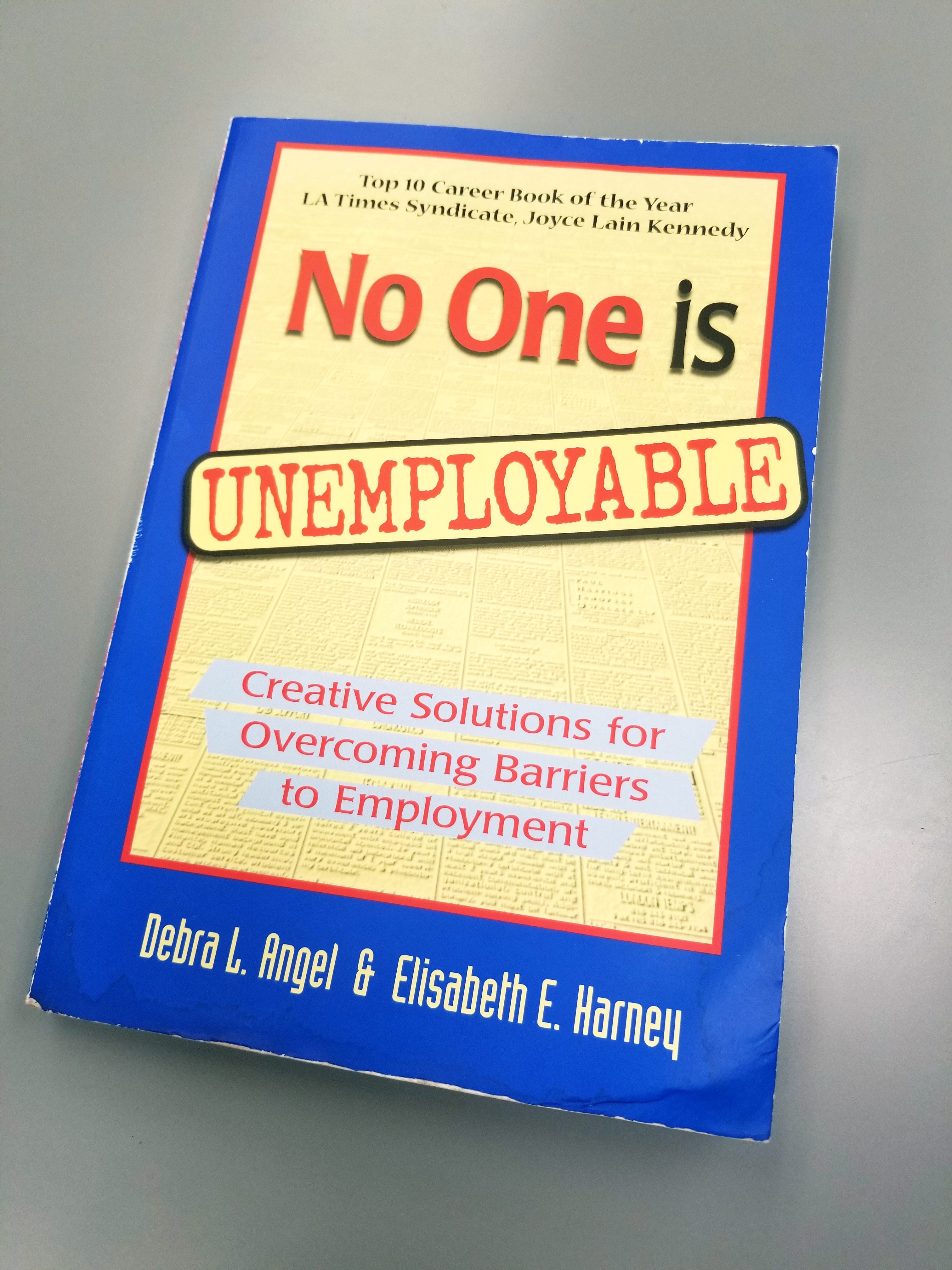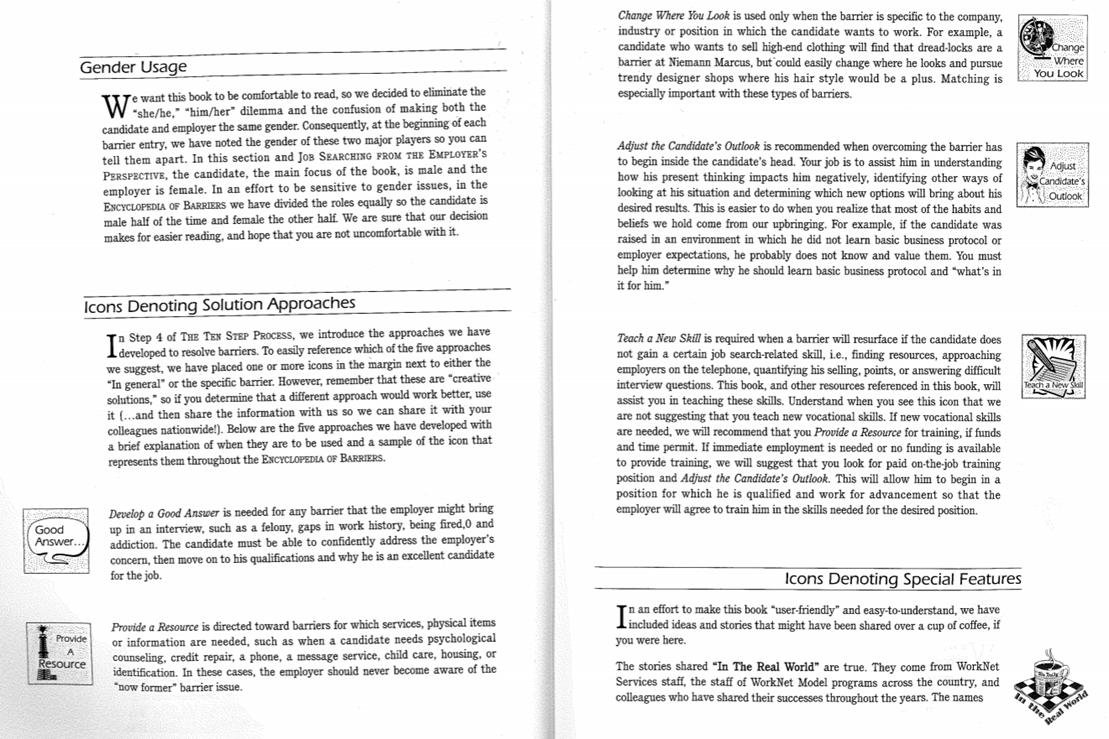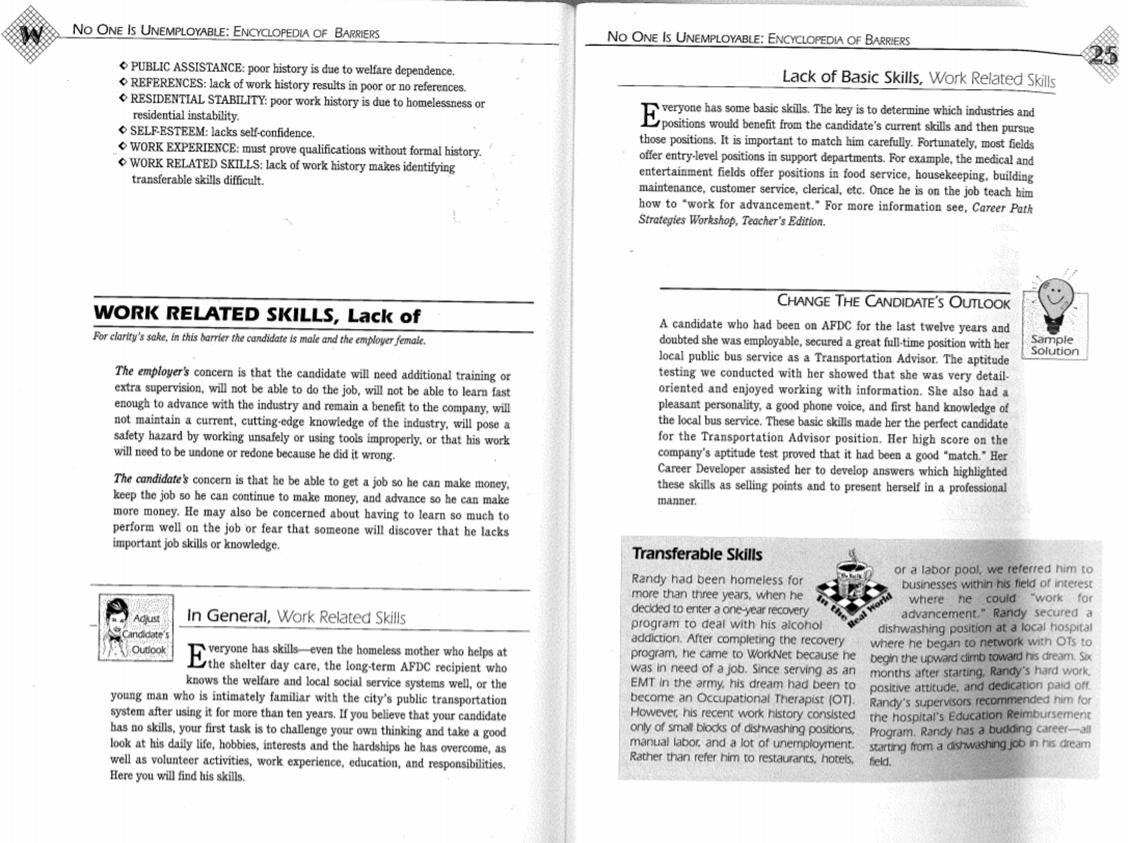The Career Development Bookshelf: “No One is Unemployable”

Barriers to employment are often one of the first things we address with a client.
Barriers, no matter how small, can prevent clients from proceeding towards their preferred future. How then can CDP’s help ensure multi-barriered clients find success, and what are some tools that can be added to our professional toolkit to help?
This is one of the questions that was brought up when CCDF conducted some preliminary research for the Work Search Course for the new VOCO Training Centre. One of VOCO’s goals is to take the diverse stories and experiences that Career Development Professionals have and share them with others. From front-line counsellors to a high-level theorist, the VOCO Training Centre is a place where CDPs can learn and share. So, in that spirit took my question to a seasoned career counsellor and master trainer, Suzanne Klinga.

Suzanne is a wealth of information, and she wholeheartedly endorsed, No One is Unemployable by Debra L. Angel and Elisabeth E. Harney as the place to find support when helping clients with barriers. The authors are CDPs based in San Francisco, and their work has focused on making sure that everyone understands their barriers to employment and how to overcome them. They believe that “[t]he only barriers that cannot be solved are those that you do not take the time to address or those that the candidate is unwilling to address.”
No One is Unemployable walks the reader through a ten-step process for overcoming barriers to employment.
This process begins with identifying the barrier and ends by carefully matching the clients with an employer. Each step between these two points is designed to help a CDP guide a client to create a tailored approach that works best for them and their career goals.

Suggested approaches that build toward the solution to a barrier are clearly identified through pictorial icons that are spread liberally, but not distractingly throughout the book. There are five approaches: Develop a Good Answer, Provide a Resource, Change Where you Look, Adjust the Candidate’s Outlook, and Teach a New Skill. These approaches provide a creative blueprint for clients looking to increase their employability or understand better where they see themselves in employment.
Here is where No One is Unemployable really gets good.
Over half of the book is an Encyclopedia of Barriers that lists out in detail from A (Addiction) to W (Workers Compensation Claims) how to understand the barrier from the client’s perspective, and effective approaches to solutions. Angel and Harney offer real-world stories from their practice, such as examples of how a client met or could meet their career goal. Several hypothetical stories enrich each entry to the book’s “barriers encyclopedia.”

Suzanne was right. No One is Unemployable is an essential book to have on your shelf and in your toolkit.
This book fits squarely in the “oldie but a goodie category”. Why does it still resonate more that 20 years since its publication? Because it uses practical tips, tools, a process to help Career Development Professionals (CDPs), and their clients deal with common, and not so common barriers that get in the way of success. No One is Unemployable became a valuable resource when developing the VOCO Training Centre Work Search Course, and it became the backbone to one of the primary activities in the Interviews topic.
If you want your own copy of No One is Unemployable, it may take a bit of searching. Unfortunately, it’s not as widely available as it once was. We found a copy at the Goodwill in California through Amazon.ca. It was well worth the search. To learn more about the VOCO Training Centre’s Work Search Course, take a look here.


